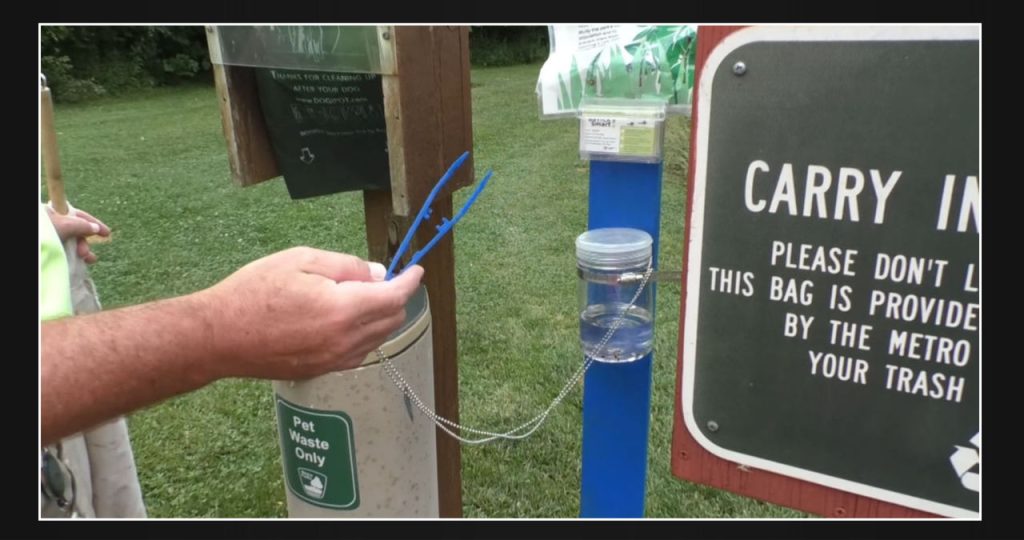He kneels down and flips over the fabric after taking a few steps.
Sargeant exclaims, “He’s ours now!” as an American dog tick is seen attached.
As he drags the cloth, he spots an American dog tick and quickly reaches for it. With his hands about to pull it off, he carefully places it into a clear test tube. The tick was collected during a tick drag, as shown in the image above.
Researchers can gain valuable insights into the spread of tick populations through collection efforts like this. This information can be used to raise public awareness about the dangers of tick-borne diseases.
Over the past 13 years, the Ohio Department of Health has reported a staggering 35-fold surge in the number of Lyme Disease cases in Ohio.
At the Ohio State University Extension in Columbus, Dr. Timothy McDermott has been monitoring the rise in numbers.
McDermott expressed concern about the surge in positive cases, stating that the tick-borne diseases can be incredibly destructive. “The diseases (ticks) vector can be just absolutely devastating,” he said.
According to McDermott, the most distressing aspect of this increase in Lyme Disease cases is that children aged 5 to 14 are the most affected group. This is mainly because they are either unaware or fail to follow tick-safe practices.
According to McDermott, the pace of tick expansion has outpaced the development of public health knowledge. He emphasized that we have not yet caught up with the necessary knowledge to combat this issue effectively.
Researchers can determine the tick population density in an area by collecting ticks on the fabric. This is where the tick drags come into the picture. The number of ticks collected on the fabric plays a crucial role in understanding the tick population density.
According to McDermott, pinpointing the exact time and location of ticks’ peak activity will enable more precise guidance for tick-safe behavior and help healthcare providers identify high-risk areas. “If we can identify when ticks are most active and where, we can provide more accurate guidance for people to follow tick-safe behaviors and for healthcare providers to know where the highest risks are,” McDermott explained.
At a park, next to the trash bag station designated for pets, there is a tick collection station. The station consists of a clear jar filled with ticks and attached to a pole. Additionally, a pair of tweezers dangles from the post, making it easy for park-goers to pluck ticks off themselves. The Ohio State Department of Health is requesting the public’s help in collecting ticks at home and donating them to their county public health department. From there, the ticks will be sent to the Ohio State Department of Health for research purposes.
A number of parks in Ohio have implemented tick collection stations that offer visitors tweezers to extract ticks and a tiny jar of alcohol to store them in.
Sargeant explained that a representative visits every month or every couple of weeks to collect the ticks.
Monitoring all of this valuable information can potentially save lives by providing helpful insights.
Read More:
- An argument on the CTA platform gets violent, leaving a woman injured and a suspect in custody
- Criminal charged for conducting $3,000 Zelle transaction during Millennium Park theft
